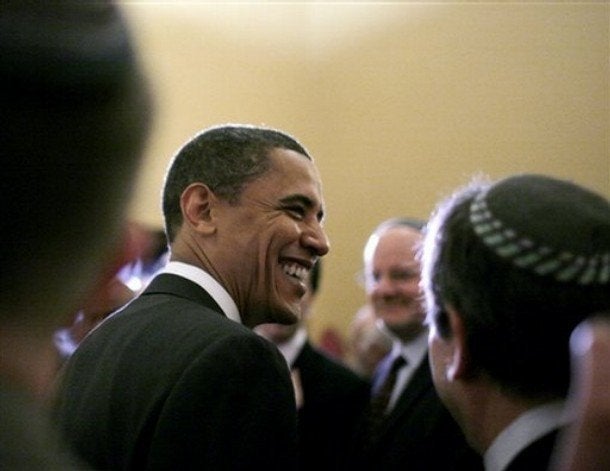
At the White House last night, someone held up the bread of poverty and said, "Let all who are hungry come and eat."
A ceremony with religious overtones at the White House is nothing remarkable. There have been Christmas tree lightings and Hanukah menorah gatherings many times. President Bush hosted iftar (post-Ramadan) dinners with Muslims. But as anyone who has participated in a Passover Seder (literally, "order") knows, it is an experience of a different kind, an ordered retelling of the passage from slavery to freedom unfolding through symbolic reminders of every individual's responsibility to carry forward the freedom we inherited from prior generations.
The President and friends recounted the history of an immigrant people originally welcomed into a country in one era, but later pressed into conditions of forced labor when a new regime turned suspicious and fearful that these Hebrews had grown too numerous. The Seder participants undoubtedly also heralded the bravery of midwives who risked their lives to defy the order of a tyrant who ordered the death of Hebrew first born males.
And while they rejoiced in the liberation of the enslaved, the First Family and company also recognized that the terrible ten plagues that brought about freedom were not simply the righteous infliction of collateral damage on an enemy. They also brought about tragic deaths of fellow human beings - and like Seder-goers around the world, the Obamas symbolically diminished their joy drop by drop from their wine cups with the mention of each of plague.
The President and company certainly declared "We were slaves in Egypt" - and were emphatically reminded by the Passover story that each of us today must identify with the enslaved, and not with the prosperous rulers.
It is no wonder that the Passover Seder - a family centered gathering that is home-based, not sited in a house of worship - is the most widely celebrated Jewish holiday ritual, embraced by the completely unobservant along with the totally orthodox. The powerful themes of gratitude for freedom, and personal responsibility for spreading it, soak in to the young children who ask the most basic of questions about what all this ritual means.Many adults active in efforts for social justice and equal rights cite the values they absorbed around the Seder table as early inspiration.
Not surprisingly, Seders have also long provided a setting for reaching across religions to celebrate points of commonality. When I was growing up in the early 1960s, my German Catholic neighbors the Moenches (who truly were mensches) asked one April to borrow our Passover books (haggadahs.) They and their local parish priest wanted to conduct their own Seder and experience the Last Supper. At our own recent family Seder, a teenage friend of the family wisely analogized the parable of the four types of children to the levels of enlightenment in Buddhism. In communities across America, interfaith and cross-racial seders are common.
A Presidential Seder might seem to many like an orange on a Seder plate. According to the Jerusalem Post, "Franklin D. Roosevelt had snuck out the back door of the White House in 1943 to avoid seeing rabbis marching out front to demand US action to save European Jews from the Nazis." And tapes released of Richard Nixon's conversations with aides and evangelists are chock full of anti-Jewish comments.
In this White House, however, a Seder seems, well, right in order.
David Abromowitz is a Senior Fellow at the Center for American Progress, www.americanprogress.org.